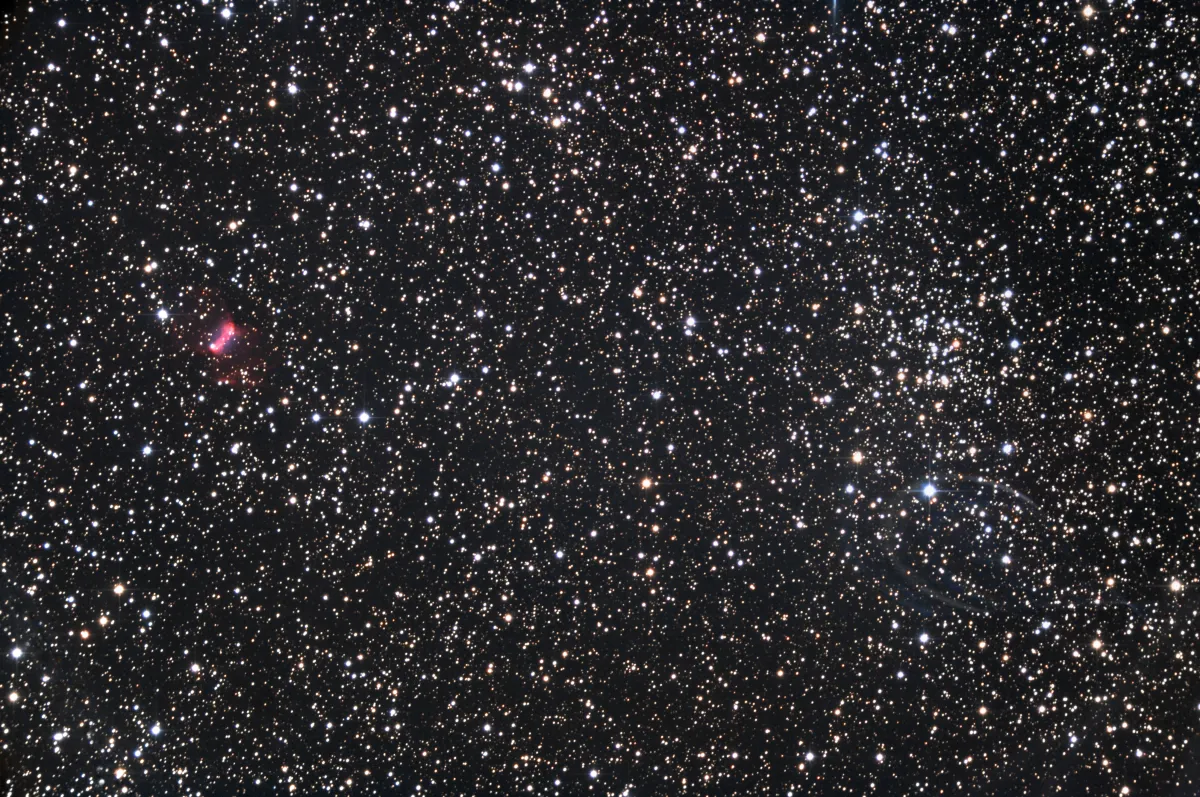Moth Nebula (Sh 1-89) & Cluster IC 1369

History
The open cluster IC 1369 was discovered on 27 April 1891 by the Danish astronomer Frederick Pechüle using the 11 inch Merz refractor at the Copenhagen Observatory. Dreyers description «small nebula cluster of stars of 13 mag» suggests that he thought to see a faint nebula in the cluster. [277, 313]
While searching the photo plates of the «Palomar Observatory Sky Survey» made with the 48 inch Schmidt telescope, the American astronomer Stewart Sharpless came across the nebulae Sh 1-89 and published it in 1953 in his first catalog of emission nebulae. [309] In his second catalogue of 1959 the nebula was classified as PN and removed. In 1967 the nebula was classified as type 3 (ratio of major to minor axis) planetary nebula by Hromov and Kohoutek and received the designation PK 89-0.1. [310, 391]
Physical Properties of Sh 1-89
Sh 1-89 is a small bipolar planetary nebula. The distance is estimated to be 1959 pc. [145] The visual apparent brightness is 14.5 mag. [149]
| Designations | PN G089.8-00.6: Sh 1- 89, PK 89-00.1, ARO 357, VV' 544 |
| Right Ascension (J2000.0) | 21h 14m 04s |
| Declination (J2000.0) | +47° 44' 28" |
| Dimensions | 35." (optical) |
| Distance | 2.0 kpc |
| Expansion Velocity | 7.5 (O-III) 16. (N-II) km/s |
| C-Star Designations | AG82 423 |
| C-Star Magnitude | B: 19.7 |
| Discoverer | SHARPLESS 1959 |
Physical Properties of IC 1369
The open cluster IC 1369 is of Trumpler type I1m. Employing the Gaia DR2 coordinates, parallaxes, and proper motions, 143 cluster members are found having cluster membership probabilities ≥ 0.75. The hottest stars of the evolved main sequence are of spectral class B9. Distances, determined by two methods based on the Gaia parallaxes, are 3280 and 3370 pc with an uncertainty of 400–500 pc. The cluster age is found to be between 300 and 350 million years. Among the cluster members six red giants of spectral classes G5–G8 and luminosities II–III, 17 Am stars, one Ap star, and one B5 blue straggler were identified. [424]
| Designation | IC 1369 |
| Type | OCL (I1m) |
| Right Ascension (J2000.0) | 21h 12m 09.0s |
| Declination (J2000.0) | +47° 46' 00" |
| Diameter | 5 arcmin |
| Visual magnitude | 8.8 mag |
| Metric Distance | 2.100 kpc |
| Dreyer Description | S neb Cl of st 13m |
| Identification, Remarks | OCL 204 |
Finder Chart
The planetary nebula Sh 1-89 and open cluster IC 1369 are located in the constellation Cygnus. The open cluster is useful to identify the exact position of the PN as it is located about half a degree east of it. On 9 August it is in opposition to the Sun and culminates at local midnight. The best observation time is from April to January.
